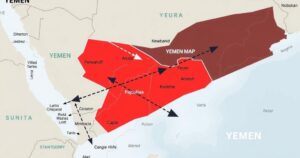Religion and Militarization in the India-Pakistan Conflict

Recent military tensions between India and Pakistan have escalated, influenced significantly by religious factors and public sentiment. With airstrikes leading to responses from both nations and the introduction of drone warfare, the situation remains precarious. Global powers have intervened, urging for diplomatic solutions to prevent further conflict, while the media landscape in India faces scrutiny over censorship.
In recent days, the military tensions between India and Pakistan have escalated significantly, with religion playing an unexpected role. Following Indian airstrikes on Pakistan in early May, analysts stated that public sentiment in Pakistan was crucial for determining the government’s potential response. Many in Pakistan rallied behind the military’s actions against India, particularly regarding its treatment of Muslims in the region.
In Islamabad, government officials called on citizens to join local civil defense units. Meanwhile, global powers, including the United States and China, voiced concerns and urged diplomacy. U.S. Secretary of State Marco Rubio held discussions with both Pakistani Prime Minister Shehbaz Sharif and Indian Foreign Minister S. Jaishankar, focusing on the urgent need to halt ongoing hostilities. “At this moment in time, there is one thing that has to stop, which is a back-and-forth and continuation, and that is what we are focused on right now,” stated State Department spokesperson Tammy Bruce during a recent briefing.
Saudi Arabia and Iran also entered the fray, as foreign ministers from both countries reached out to India to push for de-escalation. Amid these interventions, the Indian government’s communication strategy aimed at framing the conflict in religious terms gained traction. The operation targeting Pakistan was termed “Sindoor,” referencing a traditional symbol significant to Hindu culture, which some critics saw as a deliberate politicization of secular military endeavors.
Pravin Sawhney, editor of a notable Indian defense magazine, expressed concern over this religious framing. He commented that the operation’s name implied a political message geared toward retribution, thus undermining military integrity and cohesion. Conversely, India’s media landscape appeared increasingly constrained, as demonstrated when The Hindu deleted a tweet about Indian airstrikes due to lack of official confirmation.
Reports surfaced highlighting efforts by the Indian government to suppress free speech on social media platforms, with Global Government Affairs noting orders to block thousands of accounts. This censorship coincided with ongoing confrontations along the Line of Control in Kashmir, where both armies exchanged fire, sending fear throughout the population. Journalist reports characterized civilian experiences as profoundly harrowing, with many residents expressing frustration and exhaustion.
Amid this backdrop, it was reported that Indian and Pakistani forces were experimenting with drones as a new tactic in their conflict. On May 10, Pakistan accused India of launching missiles targeting critical locations in its territory. India countered by asserting that Pakistan had sent a barrage of drones across the border. These developments could heighten existing grievances pertaining to the occupation and demographic strategies in Kashmir, raising fears among locals.
Experts noted that both nations have been developing their drone capabilities, with homegrown technologies becoming integral on both sides. While each country has been working on expanding these capabilities, experts like James Patton Rogers highlighted that neither possesses drones capable of delivering nuclear payloads currently. Despite this, he expressed concern over the implications of drone warfare, asserting that its introduction marks a significant shift in military engagements between the two countries.
In summary, the recent military escalations between India and Pakistan underscore the influence of religion in geopolitical conflicts and the complexities of public sentiment in Pakistan. As both nations grapple with the introduction of drone warfare, the potential for a normalized, albeit dangerous, conflict reflects the ever-evolving dynamics in South Asia. The ongoing interventions from global powers point towards a critical need for diplomatic resolutions to avoid further military confrontations.
Original Source: tribune.com.pk








